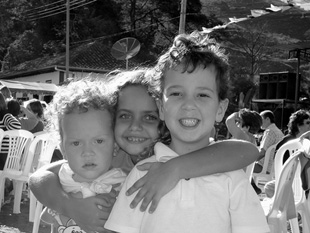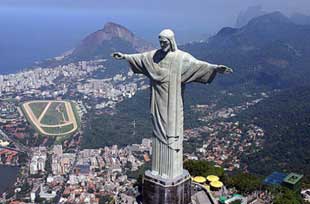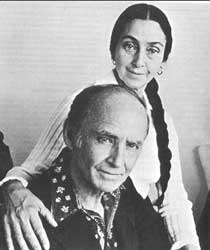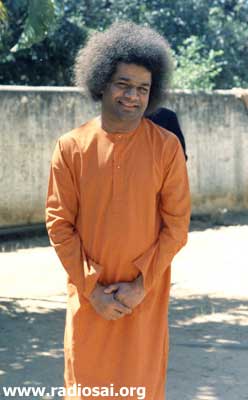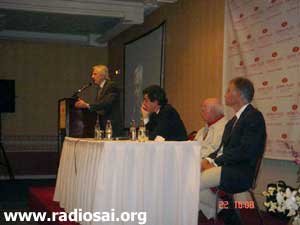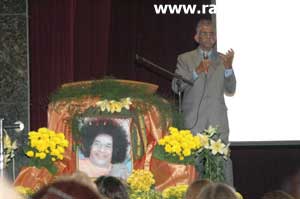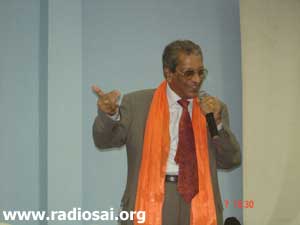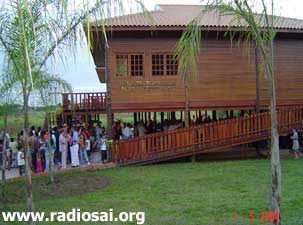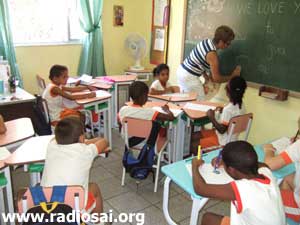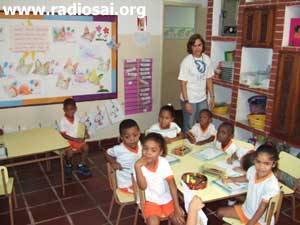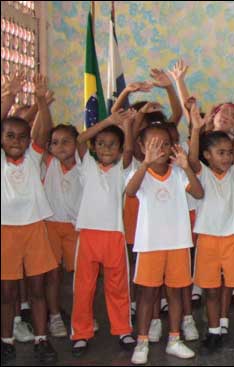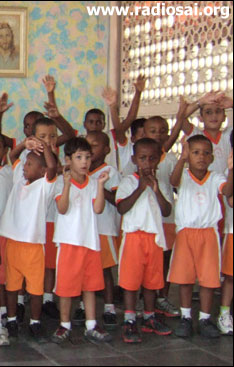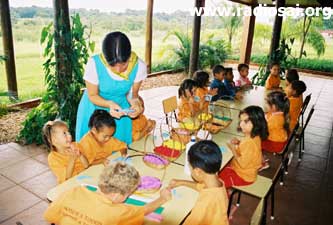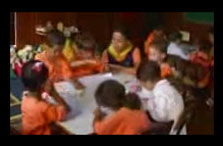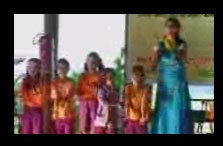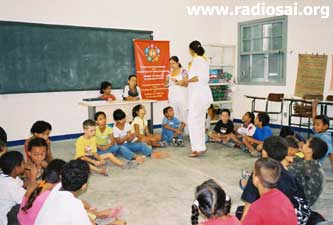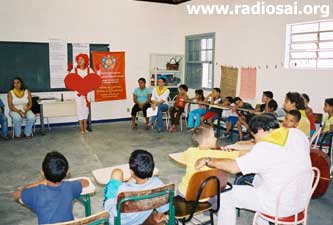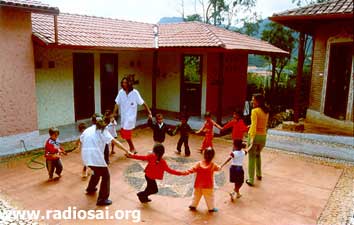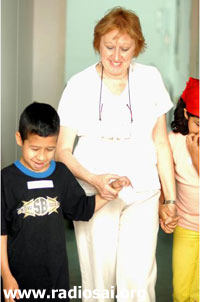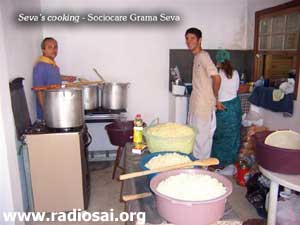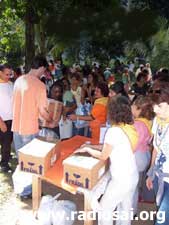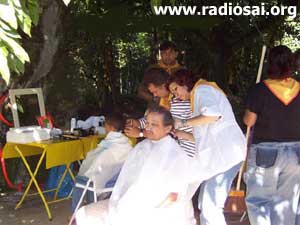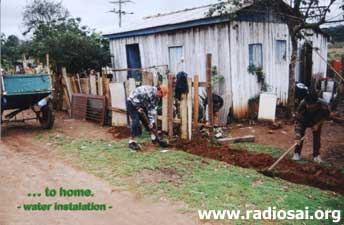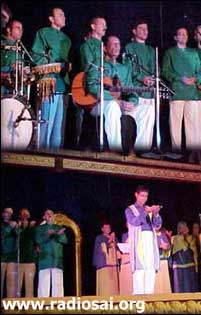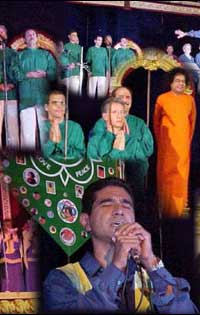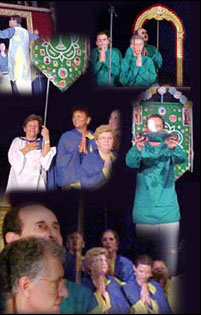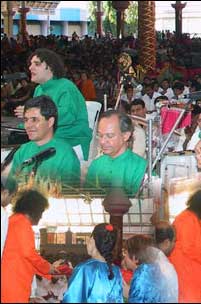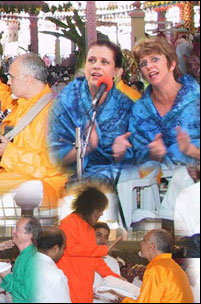 |
 |
 |
 |
| Volume 4 - Issue 08 AUGUST 2006 |
|
THE SAI MOVEMENT IN BRAZIL
The People of Brazil – A Unique Fusion of Cultures By the time Independence was attained in September 1822, and during the First and Second Empires, Brazil was known as a rich and prosperous land, always in expansion. After the Slavery Abolition Act of May 1888, Don Pedro II, Emperor of Brazil, donated wide tracts of land to immigrants from European countries, especially Italy, and also to Japanese people, in order to work the plantations and small farms
The Social and Political Brazil However, no society is perfect and without need of addressing social, political and fiscal problems. Under recent governments, economic strides have been made, with inflation under control and greater stability in the financial sector, which has positively affected the quality of life for all citizens. Brazil is engaged in improving the educational system and the living standards of needy communities through various social programs such as bringing basic sanitation and electricity to poor and rural areas and the improvement of public health services. There is still much more to do though to decrease the social disparities in this most populous country in South America which borders every South American country except Equador and Chile. Brazil - Beautiful and Bountiful Brazil is blessed with a cornucopia of natural beauty and resources. Most of the Amazonian Forest, a bountiful source of innumerable species of life and oxygen for the entire planet, lies within Brazil’s borders and has been named “Patrimony of Humanity” by UNESCO. The largest urban forest in the world, the National Park of Tijuca , is located in Rio de Janeiro.
One of the largest and most important cities in South America, Sao Paulo, is the capital of the state with the same name. Tourism has been growing steadily, partly due to the popularity of the many cultural celebrations, such as the June Feast in many northeast cities; the famous Carnival in Rio de Janeiro, Salvador and Recife, the Bumba-meu-boi Feast in Parintins, Tocantins state, and the Oktoberfest in Blumenau.
Indian Spirituality Reaches Brazil During the 1960s, the concepts of reincarnation and the karmic cycle of cause and effect began to spread around the country as many looked into Eastern philosophy and discovered Hatha Yoga and meditation for balancing the body and mind. Due to a serious lung illness in his early youth, writer and Professor Jose Hermogenes took on the practice of Yoga and in 1962 created the Hermogenes Academy of Yoga. His wife Maria called it ‘the room of the seven windows’, and it was near a big financial center in Rio de Janeiro.
Nevertheless, it was of the nature of the Brazilian people not to be overly impressed by such cures and miracles, as the country had a large number of mediums and healers and such miraculous occurrences were not uncommon through the practices of spiritualism. However, when Sai Baba’s message arrived, it nevertheless quickly began taking root in the country. Professor Hermogenes spoke of Sai Baba not only in his lectures and workshops and gatherings with friends, but also in radio and television interviews.
His wife Maria, though, immediately became enchanted with Sathya Sai, declaring her love for Him and without hesitation declaring, “He is God! He is God!” She also composed many beautiful songs to Swami. Later that year, when he came back to Brazil, Hermogenes, immersed in books and pictures, dedicated himself to discovering the history of this embodied God and translated and published Howard Murphet’s book, Sai Baba, Man of Miracles, which portrays the life of Sai Baba with documented testimony and facts in a studied and journalistic style. In a short time, people began recognizing Sathya Sai Baba as an Embodiment of the Divine – a manifestation of Shiva, the transformer aspect of the three divine personifications of cosmic forces Brahma, Vishnu, and Shiva, as well as the avatars of Rama and Krishna. Their Second Interview – All Grace And Love In 1987, Dr. Hermogenes lead a second group to Prashanti Nilayam, after which he would found the first Sai Baba Center in Brazil, located in Rio de Janeiro in the quarter of Vila Isabel. On this trip, the group of twenty-eight was dressed in white, with golden-yellow scarves tied around their necks. Swami granted them a lovely interview in which they experienced the grace of the Avatar. He materialized a diamond ring for an African devotee and asked if all were fine.
They decided to create a library with Baba´s books and to meet in groups to study bhajans, in essence, to establish a Sai Center. It was an auspicious time, a turning point, and they knew in that moment it was the beginning of a great effort, one which that carries on to this day. The women hugged each other, their hearts full of joy and peace, chanting Om Sai Ram. All were happy and feeling confident of their future. The generous and loving support and guidance of Sai brothers and sisters from Argentina, who enchanted them with their miraculous tales, cannot go unmentioned. Over the following years, Sai devotees from both the countries met each other several times in Latin America Congresses and soon the guidelines for the Sai Organization in Brazil were formed. The Leelas of the Lord Of the numerous Sai leelas occurring in Brazil over the last twenty years, there are three described here. As mentioned previously, Sai Baba materialized a lingam for a Brazilian lady in 1987 and instructed her to bath her eyes with lingam water every day. By that time she had lost more than 80% of her vision, but not only was she completely healed, dozens of others have been cured of glaucoma by using the lingam water as well. In 1985, a Brazilian couple went to see Sai Baba. The wife had been diagnosed as infertile. In an interview, Swami materialized Vibhuti for her but did not allow her husband to ingest it. Today, they have a family of three healthy children. The oldest is named Ananda and was born one year after the interview. Another young woman was yearning to see Sai Baba but was anxious about spending all of her financial resources that she had at the time. While preparing for an examination in Spanish the following day, something extraordinary occurred. While studying, she saw the sentence: Next year I will go to India. She was taken aback by this astonishing coincidence. Consulting with her teacher, they checked the text and confirmed that the sentence in question was not to be found anywhere. The Brazilian Sai Organization Currently, the Brazil Sai Organization has a Central Council overseeing 9 Regions. There are also 7 Coordinating Committees, 2 Regional Coordinators, 32 Sai Centers and 38 Sai Groups. The Sai Foundation established in 1992 is the management agent of the property of the Sai Organization in Brazil. Besides other functions, it publishes Sai Baba books in Portuguese and produces CDs, DVDs and VCDs. The Brazil Organization maintains a website – www.sathyasai.org.br – with information about Sri Sathya Sai Baba, a calendar of events, available books, Swami’s discourses, and seva projects in progress.
The Numbers Continue to Grow… One could not have imagined in 1986, while celebrating the 60th birthday of the Avatar, that His work would achieve such heights. Baba’s spirit of seva has certainly caught on among Brazilians, many of whom are eager to serve. “Swami fills our hearts making us experience that the path of Service is the solution" say the Brazilian Sai Devotees. The numbers of the Sai movement in Brazil continue to grow. 23 Public Meetings were held with a combined attendance of almost 5600 people – an average of 245 per event – spread all over the Brazilian states.
“We also held seven National Congresses with an average of 450 in attendance, and three National Education Meetings, promoted by the Sri Sathya Sai Institute of Education of Brazil, including two of them with a wider reach which included participates from other countries in Latin America,” the devotees share with H2H. Sai Family Elders Share Much Joy and Love “We have also hosted many well-known speakers from the International Sai Organization, all of them living examples of love and dedication to Sai Service. During his stay with us, Dr. Choudary Voleti, cardiologist at the Super Specialty Hospital of Prashanti, also spoke in several hospitals in Brazil, such as the Hospital João XXIII in Belo Horizonte, the largest facility in Latin America specializing in traumatology. The doctors and nurses who attended his talks were inspired and encouraged to lovingly serve all those in their care.
John Behner, Leonardo Gutter, Artung Junsai, and Michael Goldstein have also visited as guest speakers and examples of selfless service. Their actions and words convey their dedication to dharma, discipline and perseverance. The Berra Family from Argentina, Dr. Jorge, Mrs. Rosana and their daughter Alma, also gifted us with their presence. Alma recently returned to Brazil in the 4th National Sai Youth Meetingand shared her wonderful experiences with us.
In 2006, Dr. Choudary Voleti, Dr. Sara Pavan, Dr. Samuel Sandweiss and his wife Sharon, and Professor Anil Kumar visited and spoke to us as well. Anil Kumar, Professor and Doctor in Biology, stayed with us for a week. His enthusiasm, intelligence and wit were inspiring and his spontaneous joyful energy left a memorable impression in our hearts,” the Sai devotees recall with great enthusiasm and joy. Educare in Brazil Over the last twenty years, the Education Program in Human Values has stirred the interest of countless educators and parents, and achieved a boost after the establishment of the Sri Sathya Sai Institute of Education of Brazil in 2001. The EHV Program in Brazil continues to turn out more and more graduate teachers each passing year.
This is a time when educators and parents alike are anxiously watching as rampant materialism is negatively influencing the formation of their children’s character. This urgency and concern has been reflected in an increasing interest in Sai Baba’s messages, especially in the area of education. To help fill this need, the Sri Sathya Sai Institute of Education of Brazil – ISSSEB – offers free basic, intermediary and specialization courses, bringing to educators and professionals of the country the unique Sai Teachings in education and spirituality.
In 1992, the first Sathya Sai School was established in a very poor community in Vila Isabel, in Rio de Janeiro. It has served as an inspiration and a model for the founding of other Sai Schools in the country, such as the Sai Schools in Recife, Goiania, Ribeirão Preto and Minas Gerais.
They are supported by volunteer donations and are regulated by the laws of the country. “We dream of our children in a better world: more humane, more secure, more creative, and ultimately happier,” say the devotees, passionately devoted to His cause.
Service Projects All Over the Country Inspired by the example of students of Baba’s University, Brazilian brothers and sisters developed many action projects in the needy communities called Community Assistance and Medical Camps. Since 2005, these activities have developed into more systematic forms, enabling them to efficiently mobilize an increasing number of professionals from many areas, including volunteers not linked to the Organization. The first Medical Camp in Brazil occurred in April 2005 and was a pilot project that brought many blessings to the volunteers and participants.
Odontological and ophthalmological treatments were carried out, the latter supported by the donation of fifty pairs of eyeglasses. The group effort of doctors, nurses, dentists and pharmacists served approximately 700 people. The young adults took care of the food items while other volunteers helped with the reception and registration of the patients. In this inaugural project, procedures were outlined, establishing models which can be applied in the rest of the country.
Since then, these activities have expanded throughout Brazil. In a bit more than one year, three large Community Assistance projects were held – two of them in areas of dire poverty – besides numerous Medical Camps held in various Brazilian cities.
Brazilian Music Before the Lord “Swami blessed us in a very special way, allowing Brazilian music and rhythm to be heard in Prashanti Nilayam on three different occasions,” say the devotees with great jubilation, “The first was Guru Poornima in July 2002, when about thirty Brazilians chanted beautiful songs in Portuguese. They sang Brazilian classics for forty minutes, such as ‘Trenzinho Caipira’ from Villa Lobos, ‘Aquarela do Brasil’ from Ary Barroso, as well as many bhajans in Portuguese.”
In November 2004, a group of professional Brazilian musicians presented Indian bhajans to Swami, utilizing Brazilian rhythms. The third time occurred on January 1st 2005, when the World Choir comprised of 175 voices from 45 countries, sang a song in Portuguese composed by a Brazilian conductor. The choir members felt moved while singing in Portuguese, a language unfamiliar to most of them. “Swami gently moved to the rhythm of the songs, making our hearts happy and enchanting us with His kindness and generosity,” say the devotees recalling those blissful moments.
Portuguese on Radio Sai – A Divine Gift
What a wonderful story of love, of service, of bliss! We, at Heart2Heart, thank the Brazilian Sai devotees for sharing with us their wonderful story and pray that Sai travels to every village and every inch of Brazil so that the country shines beautifully reflecting His love and becomes a beacon of inspiration for the whole world. - Heart2Heart Team Dear Reader, this is our fifth article in the series of articles on the Sai Movement in Latin America. How do you like these articles? Would you like more of such stories of Sai Movement in other countries? Please tell us know at h2h@radiosai.org. Please mention your name and country when you write to us. Thank you for your time. |
|||||||||||||||||||||||||||||||||||||||||||||||||||||||||||||||||||||||||||||||||||||||||||||||||||||||||||||||||||||||||||||||||||||||||||||||||||||||||||||||||||||||||||||||||||||||||||||||||||||||||
| You can write to us at : h2h@radiosai.org |
Vol 4 Issue 08 - AUGUST 2006
|
Best viewed in Internet Explorer - 1024 x 768 resolution. |
DHTML Menu by Milonic. |

